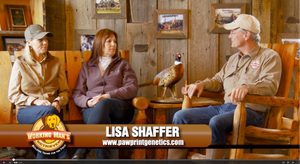One of the most easily recognized breeds throughout the world, German shepherd dogs have packed plenty of accomplishments, while garnering a storied reputation, into a very short history.
The modern German shepherd dog (GSD) dates to 1899 and descends from that country’s herding and guarding dogs. Through a strict breeding program grounded in working ability, the standardized GSD developed quickly; and while it continued to be used for herding and guarding sheep, the breed’s outstanding characteristics suited it for a wide array of working roles.
German shepherd dogs serve in military and police roles to track and detain criminals, as patrol and personal guard dogs and in scent detection – everything from tracking and narcotics work to mine, explosive and accelerant discovery. GSDs are also used in search and rescue operations and as guide dogs for the blind.
The GSD’s diversity of use stems from their inherent working abilities that include intelligence, courage, trainability, strength, a sensitive nose, obedience and loyalty. In fact, in the book The Intelligence of Dogs, author and psychologist Stanley Coren ranks GSDs as the third-most intelligent dog (behind the border collie and poodle).
German shepherds are intelligent and hard-working dogs who need daily stimulation and ...









